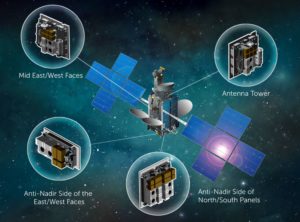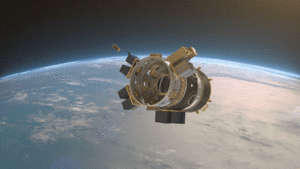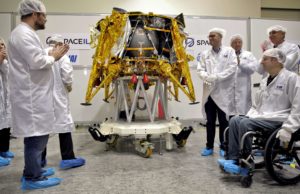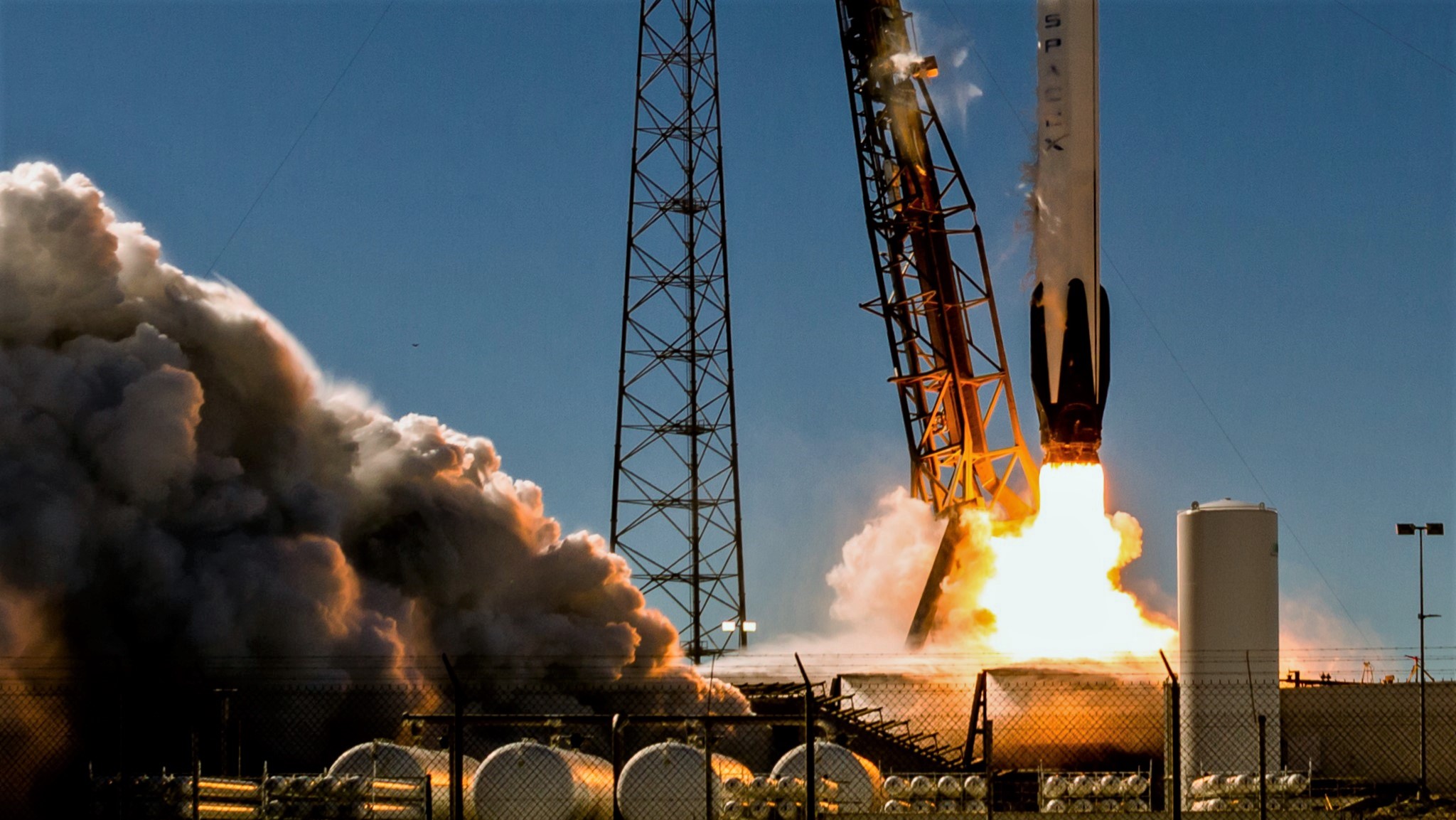
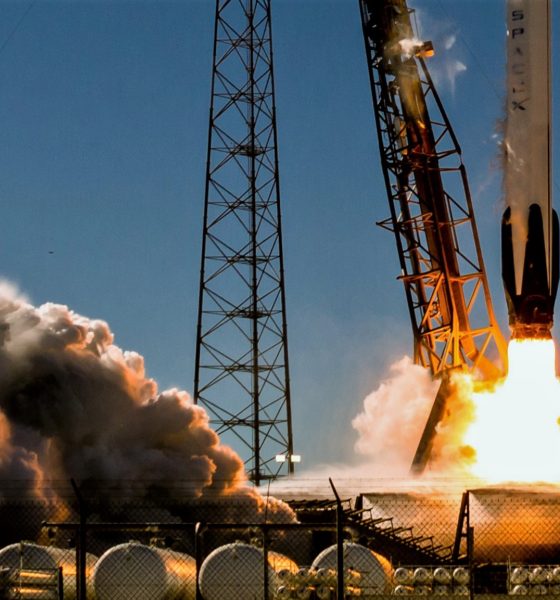
News
SpaceX nears Falcon 9’s first commercial interplanetary launch: a private Moon lander
Israeli aerospace company SpaceIL has reportedly completed the world’s first private Moon lander at the same time as the primary payload it will be tagging along with – Indonesia’s PSN-6 communications satellite – arrived in Cape Canaveral, Florida, where engineers will now prepare the spacecraft for a launch NET February 13th, 2019 atop SpaceX’s Falcon 9 rocket.
Recently crowned Beresheet (Hebrew for “Genesis”), the small ~600 kg (1300 lb) lunar lander will also be joined by an innovative new rideshare technology managed this time around by Spaceflight Industries, potentially giving small satellite (under 100 kg) customers the ability to tag along with a large geostationary communications satellite like PSN-6 to reach orbits far higher than those routinely accessible with rideshares and even dedicated launches.
The Indonesian satellite Nusantara Satu (PSN VI) has arrived at the Cape for its February launch on a SpaceX Falcon 9 (SSL Release: https://t.co/usuBQeq9Uz).
This is a shared launch with Spaceflight GTO-1/SpaceIL (Israel’s first mission to the moon): https://t.co/OvyNAc9qfP pic.twitter.com/Z8HDFDUCdX
— NSF – NASASpaceflight.com (@NASASpaceflight) December 20, 2018
While SpaceX is unaffiliated with SpaceIL, this mission will technically mark the first time that SpaceX has conducted a commercially-procured interplanetary launch, hopefully placing Beresheet (nicknamed “Berrie” by SpaceIL) on a direct trajectory to the Moon after sending PSN-6 on its way to geostationary orbit. The actual logistics of this unprecedented rideshare mission are unclear, but the most logical setup would see PSN-6 somehow integrated on top of SpaceIL’s Moon lander, allowing the communications satellite to be deployed into a geostationary transfer orbit before Falcon 9’s upper stage reignites to send Beresheet on an escape trajectory.
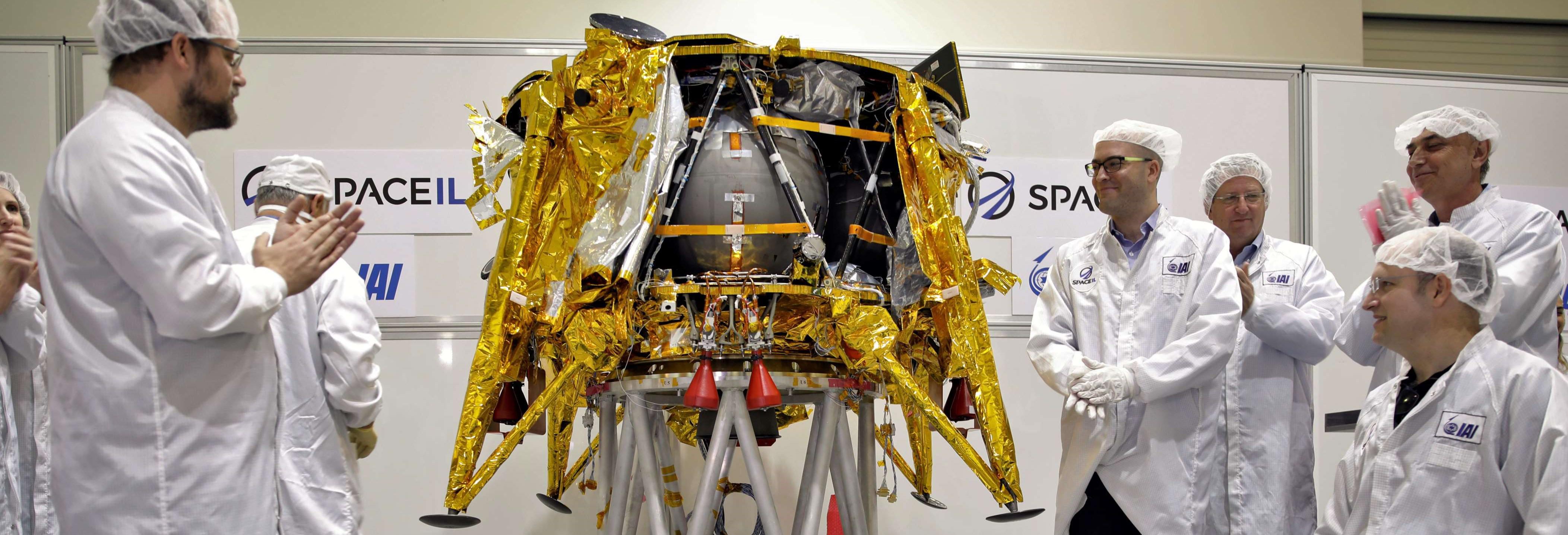
Assuming that is the case, this mission may also become the second time that SpaceX has utilized its Falcon 9 upper stage’s long coast capabilities on a commercial mission, as the rocket would need to remain operational at least several hours after deploying PSN-6 in order to reignite for Beresheet. It’s also possible that the PSN-6 satellite itself will play a role in sending Beresheet to the Moon or that the lunar lander will bring along its own boost stage to journey from GTO to lunar orbit, but both alternatives are improbable. Just last week, on December 22nd, SpaceX conducted its first true operational long-coast during the launch of the USAF’s first new GPS satellite, coasting for around 60 minutes between Merlin Vacuum (MVac) ignitions.
In February 2018, Falcon Heavy also demonstrated an even longer coast of ~6 hours during the heavy-lift rocket’s launch debut, allowing SpaceX to send Starman and his Tesla Roadster into an elliptical orbit around the sun, one end stretching out past the orbit of Mars.
- An overview of SSL’s PODS rideshare concept, showing the many possible locations where smallsat dispensers can potentially be attached to commsats. (SSL)
- Spaceflight’s SSO-A Upper Free Flyer visualized deploying cubesats shortly after launch on Falcon 9. PODS would be quite similar, albeit on a smaller scale. (Spaceflight)
- Beresheet is seen here prior to the spacecraft’s flight from Israel to Florida. (SpaceIL/IAI)
Aside from the already-unprecedented rideshare combo of a commercial communications satellite and an interplanetary spacecraft, the PSN-6 mission will further include an innovative new approach to satellite rideshare launches, potentially allowing unrelated smallsat operators the opportunity to piggyback on the commercial geostationary satellite missions that serve as a backbone of the private launch market. By piggybacking on larger satellites headed to geostationary orbit (35,786 km or 22,236 mi), smallsats may be able to reach truly unprecedented orbital heights – useful for science, commerce, and exploration – that could ultimately pave the way for independent interplanetary smallsat missions, leapfrogging off of high-energy geostationary orbits to head to nearby bodies like asteroids, Mars, Venus, and more.
There is also a chance that PSN-6 could launch on a flight-proven Falcon 9 rocket, an event that would mark the first time in history that a commercial interplanetary spacecraft reached orbit on a reused commercial rocket. Either way, FCC filings have already confirmed that Falcon 9 will attempt to land on drone ship Of Course I Still Love You (OCISLY) roughly 650 km (410 mi) off the Florida coast.
For prompt updates, on-the-ground perspectives, and unique glimpses of SpaceX’s rocket recovery fleet check out our brand new LaunchPad and LandingZone newsletters!

Elon Musk
Elon Musk’s X will start using a Tesla-like software update strategy
The initiative seems designed to accelerate updates to the social media platform, while maintaining maximum transparency.

Elon Musk’s social media platform X will adopt a Tesla-esque approach to software updates for its algorithm.
The initiative seems designed to accelerate updates to the social media platform, while maintaining maximum transparency.
X’s updates to its updates
As per Musk in a post on X, the social media company will be making a new algorithm to determine what organic and advertising posts are recommended to users. These updates would then be repeated every four weeks.
“We will make the new 𝕏 algorithm, including all code used to determine what organic and advertising posts are recommended to users, open source in 7 days. This will be repeated every 4 weeks, with comprehensive developer notes, to help you understand what changed,” Musk wrote in his post.
The initiative somewhat mirrors Tesla’s over-the-air update model, where vehicle software is regularly refined and pushed to users with detailed release notes. This should allow users to better understand the details of X’s every update and foster a healthy feedback loop for the social media platform.
xAI and X
X, formerly Twitter, has been acquired by Elon Musk’s artificial intelligence startup, xAI last year. Since then, xAI has seen a rapid rise in valuation. Following the company’s the company’s upsized $20 billion Series E funding round, estimates now suggest that xAI is worth tens about $230 to $235 billion. That’s several times larger than Tesla when Elon Musk received his controversial 2018 CEO Performance Award.
As per xAI, the Series E funding round attracted a diverse group of investors, including Valor Equity Partners, Stepstone Group, Fidelity Management & Research Company, Qatar Investment Authority, MGX, and Baron Capital Group, among others. Strategic partners NVIDIA and Cisco Investments also continued support for building the world’s largest GPU clusters.
News
Tesla FSD Supervised wins MotorTrend’s Best Driver Assistance Award
The decision marks a notable reversal for the publication from prior years, with judges citing major real-world improvements that pushed Tesla’s latest FSD software ahead of every competing ADAS system.

Tesla’s Full Self-Driving (Supervised) system has been named the best driver-assistance technology on the market, earning top honors at the 2026 MotorTrend Best Tech Awards.
The decision marks a notable reversal for the publication from prior years, with judges citing major real-world improvements that pushed Tesla’s latest FSD software ahead of every competing ADAS system. And it wasn’t even close.
MotorTrend reverses course
MotorTrend awarded Tesla FSD (Supervised) its 2026 Best Tech Driver Assistance title after extensive testing of the latest v14 software. The publication acknowledged that it had previously criticized earlier versions of FSD for erratic behavior and near-miss incidents, ultimately favoring rivals such as GM’s Super Cruise in earlier evaluations.
According to MotorTrend, the newest iteration of FSD resolved many of those shortcomings. Testers said v14 showed far smoother behavior in complex urban scenarios, including unprotected left turns, traffic circles, emergency vehicles, and dense city streets. While the system still requires constant driver supervision, judges concluded that no other advanced driver-assistance system currently matches its breadth of capability.
Unlike rival systems that rely on combinations of cameras, radar, lidar, and mapped highways, Tesla’s FSD operates using a camera-only approach and is capable of driving on city streets, rural roads, and freeways. MotorTrend stated that pure utility, the ability to handle nearly all road types, ultimately separated FSD from competitors like Ford BlueCruise, GM Super Cruise, and BMW’s Highway Assistant.
High cost and high capability
MotorTrend also addressed FSD’s pricing, which remains significantly higher than rival systems. Tesla currently charges $8,000 for a one-time purchase or $99 per month for a subscription, compared with far lower upfront and subscription costs from other automakers. The publication noted that the premium is justified given FSD’s unmatched scope and continuous software evolution.
Safety remained a central focus of the evaluation. While testers reported collision-free operation over thousands of miles, they noted ongoing concerns around FSD’s configurable driving modes, including options that allow aggressive driving and speeds beyond posted limits. MotorTrend emphasized that, like all Level 2 systems, FSD still depends on a fully attentive human driver at all times.
Despite those caveats, the publication concluded that Tesla’s rapid software progress fundamentally reshaped the competitive landscape. For drivers seeking the most capable hands-on driver-assistance system available today, MotorTrend concluded Tesla FSD (Supervised) now stands alone at the top.
News
Elon Musk’s Grokipedia surges to 5.6M articles, almost 79% of English Wikipedia
The explosive growth marks a major milestone for the AI-powered online encyclopedia, which was launched by Elon Musk’s xAI just months ago.

Elon Musk’s Grokipedia has grown to an impressive 5,615,201 articles as of today, closing in on 79% of the English Wikipedia’s current total of 7,119,376 articles.
The explosive growth marks a major milestone for the AI-powered online encyclopedia, which was launched by Elon Musk’s xAI just months ago. Needless to say, it would only be a matter of time before Grokipedia exceeds English Wikipedia in sheer volume.
Grokipedia’s rapid growth
xAI’s vision for Grokipedia emphasizes neutrality, while Grok’s reasoning capabilities allow for fast drafting and fact-checking. When Elon Musk announced the initiative in late September 2025, he noted that Grokipedia would be an improvement to Wikipedia because it would be designed to avoid bias.
At the time, Musk noted that Grokipedia “is a necessary step towards the xAI goal of understanding the Universe.”
Grokipedia was launched in late October, and while xAI was careful to list it only as Version 0.1 at the time, the online encyclopedia immediately earned praise. Wikipedia co-founder Larry Sanger highlighted the project’s innovative approach, noting how it leverages AI to fill knowledge gaps and enable rapid updates. Netizens also observed how Grokipedia tends to present articles in a more objective manner compared to Wikipedia, which is edited by humans.
Elon Musk’s ambitious plans
With 5,615,201 total articles, Grokipedia has now grown to almost 79% of English Wikipedia’s article base. This is incredibly quick, though Grokipedia remains text-only for now. xAI, for its part, has now updated the online encyclopedia’s iteration to v0.2.
Elon Musk has shared bold ideas for Grokipedia, including sending a record of the entire knowledge base to space as part of xAI’s mission to preserve and expand human understanding. At some point, Musk stated that Grokipedia will be renamed to Encyclopedia Galactica, and it will be sent to the cosmos.
“When Grokipedia is good enough (long way to go), we will change the name to Encyclopedia Galactica. It will be an open source distillation of all knowledge, including audio, images and video. Join xAI to help build the sci-fi version of the Library of Alexandria!” Musk wrote, adding in a later post that “Copies will be etched in stone and sent to the Moon, Mars and beyond. This time, it will not be lost.”
